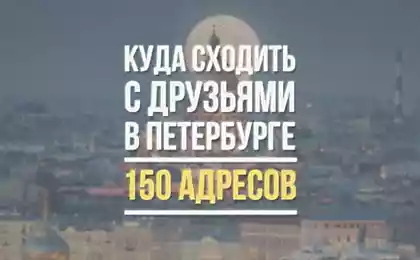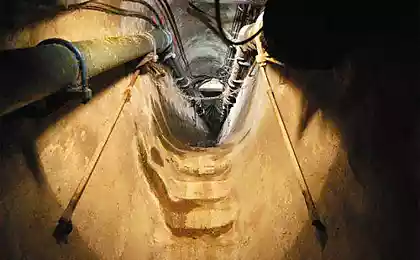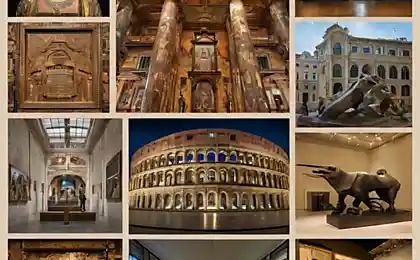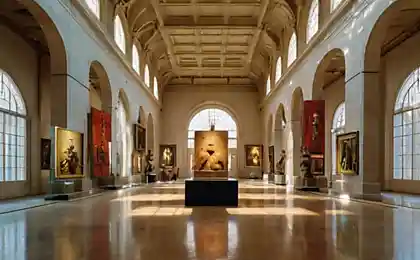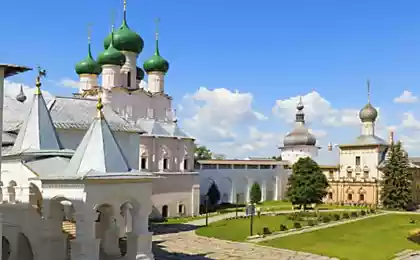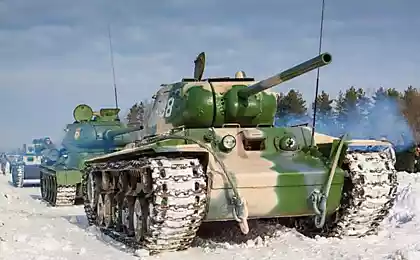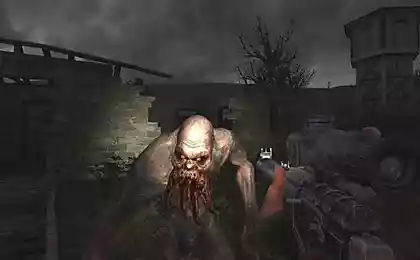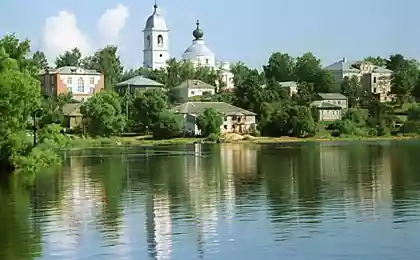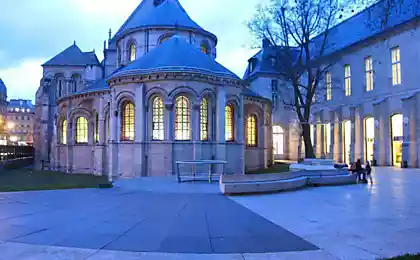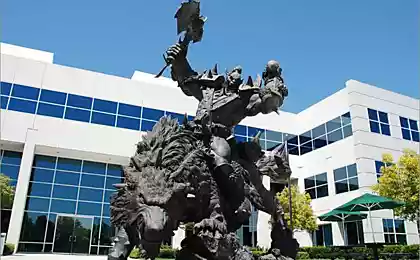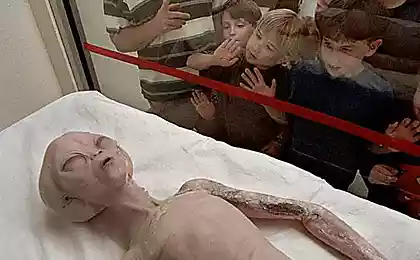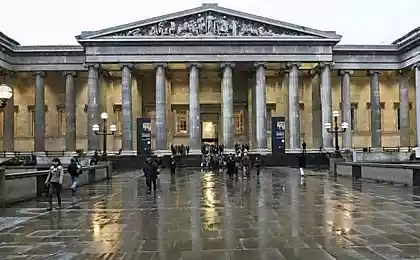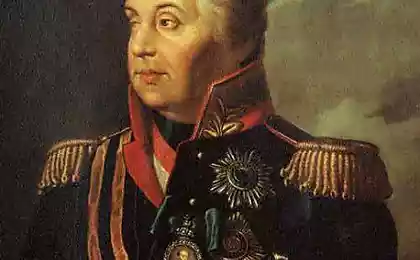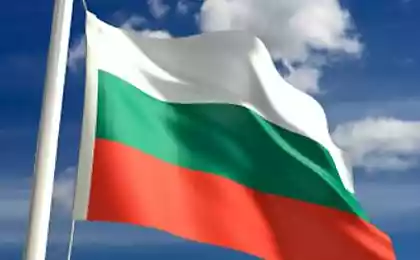1251
Panorama 1453 Museum
Today we are going to place the final assault of Constantinople, which is now open patriotic museum "Panorama 1453". His exposition is devoted to the decisive assault fortifications of Constantinople troops of Sultan Mehmed II (1430-1481).
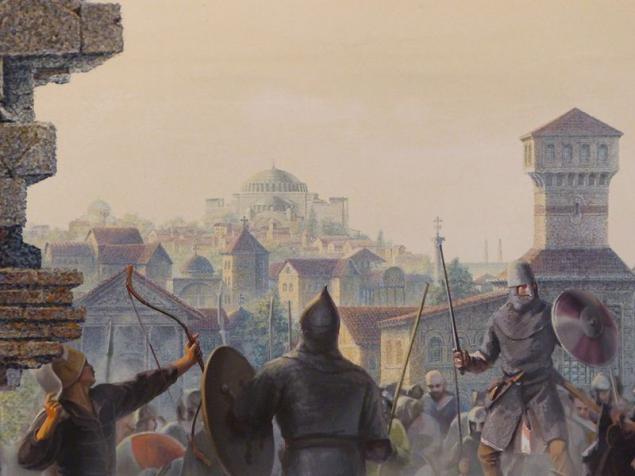
Early in the morning of May 29, 1453 one hundred thousand army of Sultan Mehmed II began the final assault on Constantinople.
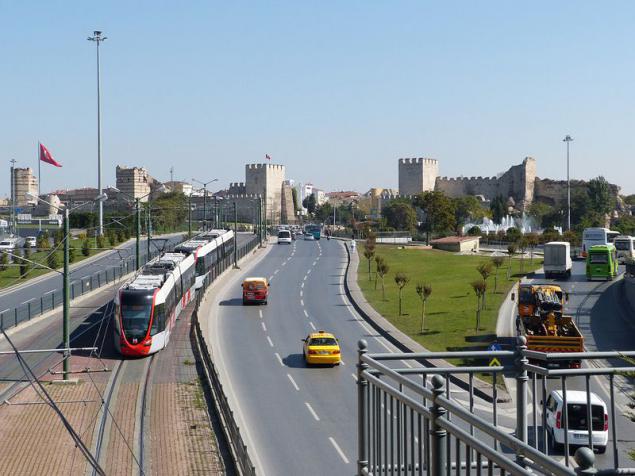
For almost two months, was the siege of the city, a few defenders lost the last hope. Turkish gun thoroughly grind fortifications, opening the way for the assault. Help did not come, the city was doomed. The main events of the siege took place near the gate of the Holy Roman, where almost opposite each other are the main forces of the parties and the rates of the Sultan and the Emperor. In the battle for these gates and killed the last Byzantine emperor, Constantine XI. Now then park with a fountain and through the historic gate can be reached by tram. A few years ago on the site of the final assault of Constantinople opened patriotic museum "Panorama 1453»:

The building is decorated with beautiful city views.
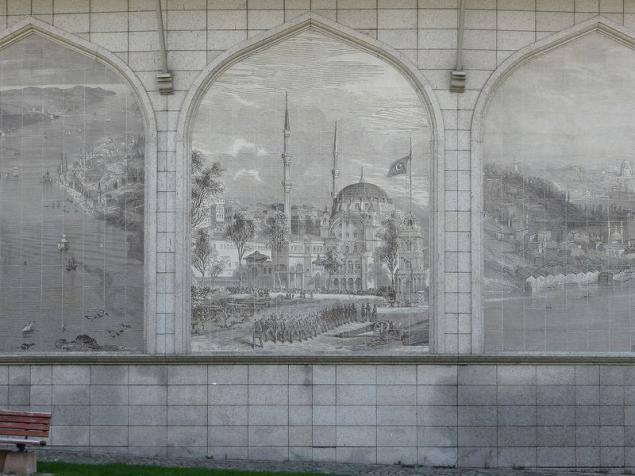
Map does not aim to historical accuracy. Here, the main task - to idealize, and otherwise make heroes mythologizing. However, in general terms, all apparently was. By panorama storm accompanied by appropriate sound background with a crash, screams, shots and music. Plus, crowds (mostly liberated women of the East) create incessant din. And in the museum lead crowds constantly screaming schoolchildren. It is necessary to abstract from external stimuli and try to carefully porassmatrivat details - great panorama painted in great detail (say, we do Petersburg artists).
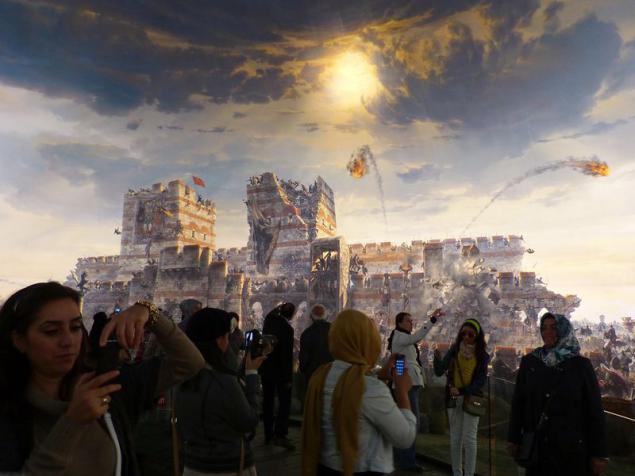
Storm the gates of St. Roman. Siege towers and ladders on the outside walls. In the foreground are seen siege guns. Defenders of the city meet a cloud of arrows and fireballs.
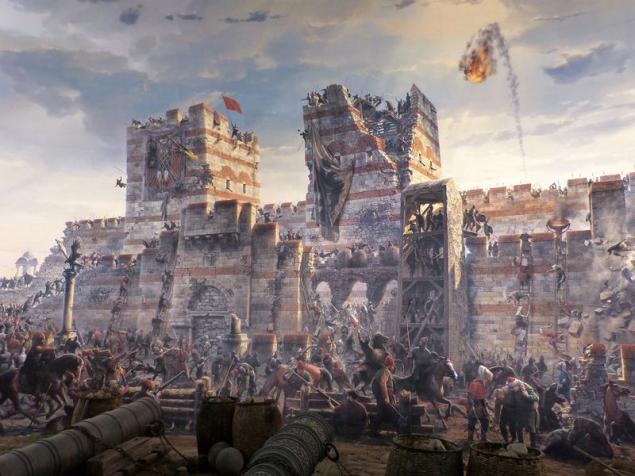
Boy on a partially torn down the walls. Left on the north tower of the Turkish folk epic hero, who first raised the red flag of victory over the walls of Constantinople. What once was a bundle of arrows and died.
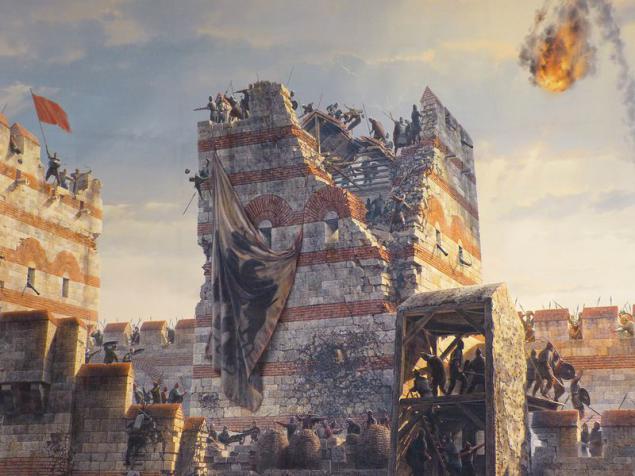
Reverent delight.
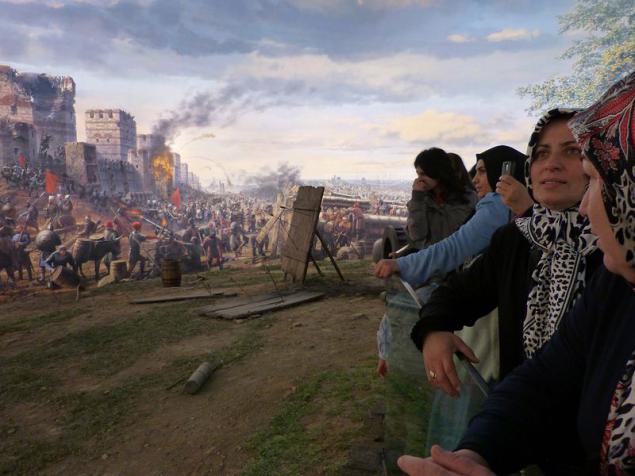
On the walls of the victory belongs to the Byzantines, and the two-headed eagle still flies over the defenders. But it is not for long.

Direct hit in the coming cavalry.
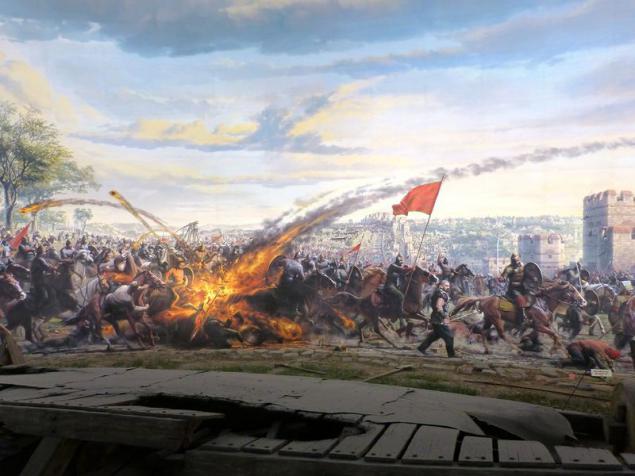
In the background you can see that in fact it is bad - offensive goes along the wall in many places pit filled with sand or crossed by stairs and the Turks are about strikes in the city.
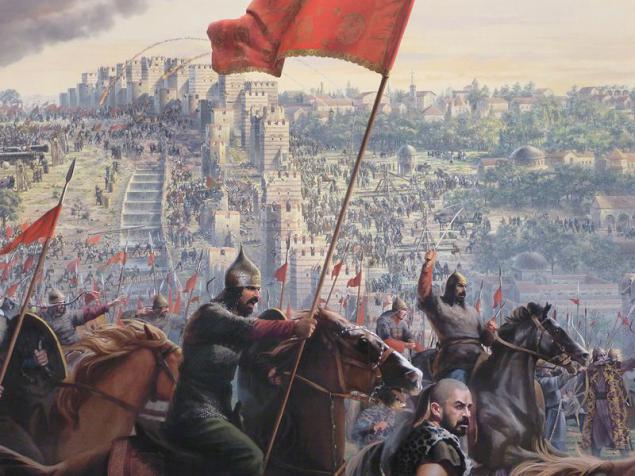
In the background, the sultan and his entourage.

sends riders in the break:

The cavalry comes in a decisive attack.

Hooray! we is broken; bend Swedes. O glorious hour! a nice view! More pressure - and the enemy flees. And follow the cavalry set off ...
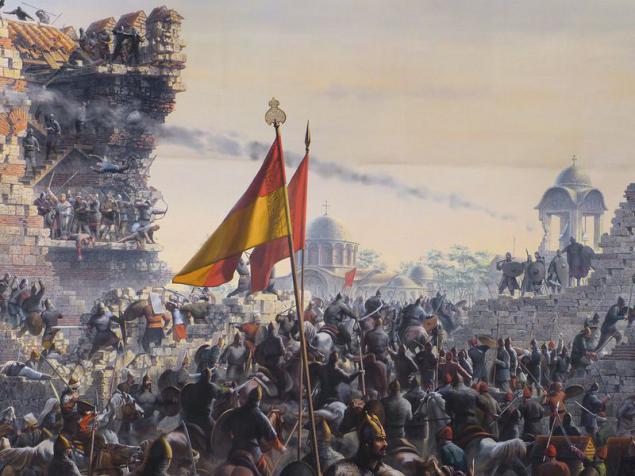
Advocates understand that no matter how come tryndets.
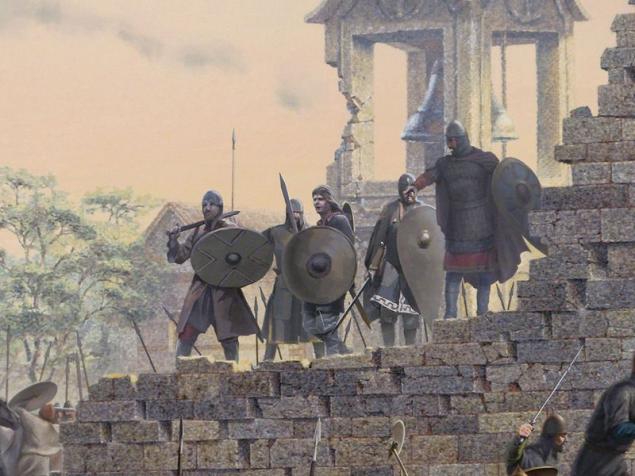
Anticipation of a three-day looting the city adds excitement.
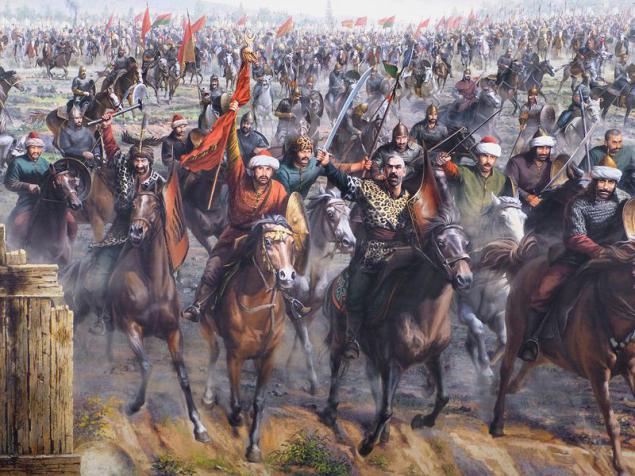
At this time, on the other flank in full swing melee. There is very little of the wall remains. Mixed in a bunch of horses, people, and thousands of volleys of shells merged into a prolonged howl.
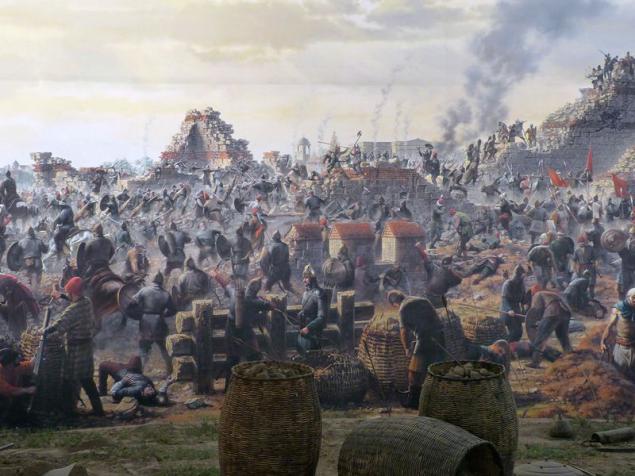
Guns beat simultaneously with the storm and covering their own and others. Cores are stuck in the wall. The Byzantines on the outer walls kicking bricks.
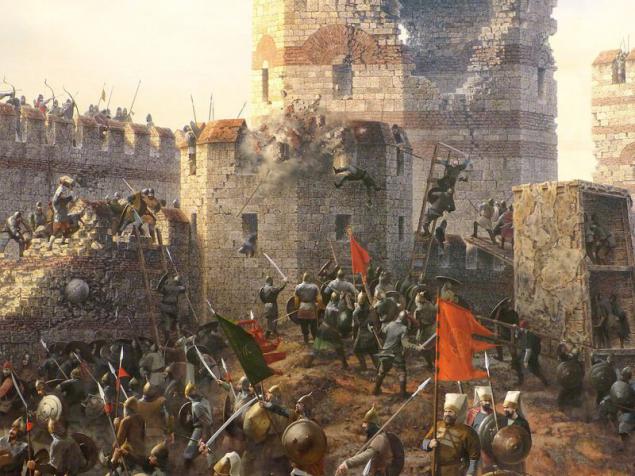
The gap through the smoke and dust is seen in Sofia.
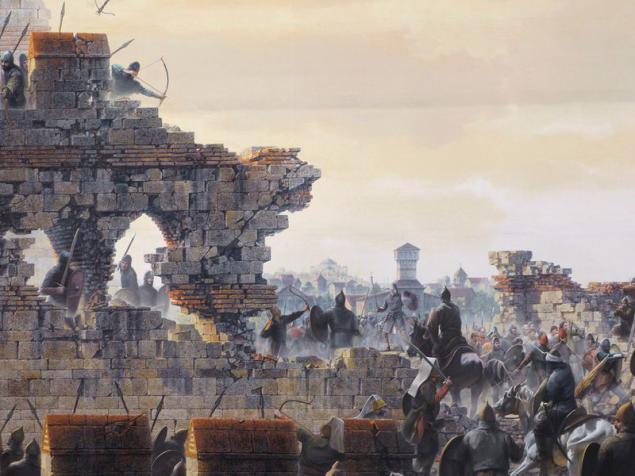
Right up to the horizon solid mass of attackers.
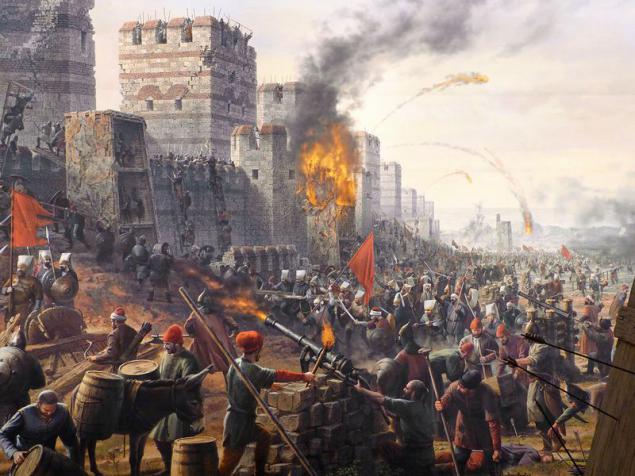
Stenoboynaya artillery. In the background, in the Sea of Marmara stands the Turkish fleet.

Cannon and kernel size.

For guns in anticipation of the order is an infantry reserve. Guests are winning by a large margin. In fact, the fall of the city at the time was a matter of time. In fact, Byzantium and Constantinople itself had been destroyed fellow Christians even in 1204 IV crusade. Restored in 1261 the empire was never able to completely rise from the ruins. Constantinople as a symbol and a shadow of its former greatness was a misunderstanding among the Turkish possessions.
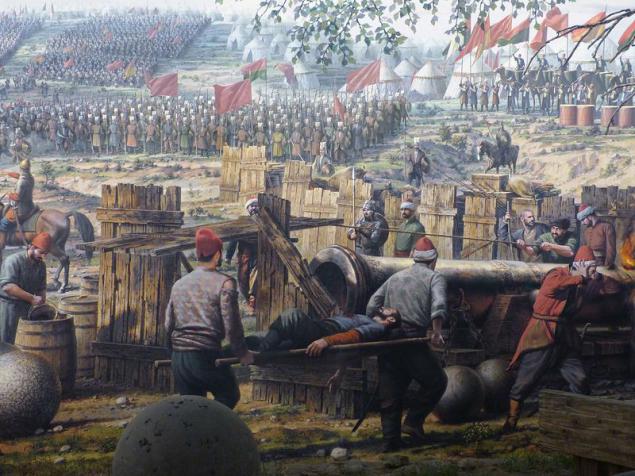
Now the walls of Theodosius look like immediately after the assault. Initially, these walls were built so: Walls of Theodosius length of 5630 meters crossing the Bosphorus from the Cape Sea of Marmara to the Golden Horn. The first row of wall height of 5 m defended the moat 20 m wide and 10 m deep. The second row, which had a width of 2-3 m and 10 m in height, amplified 15-meter tower. The third row of the most massive, reaching a thickness of 6-7 m, and was protected by towers in height from 20 to 40 m. The towers were equipped with devices for throwing stones and pouring hot tar enemy or oil. Base of the wall went 10-20 meters under the ground, which virtually eliminates the possibility of digging.
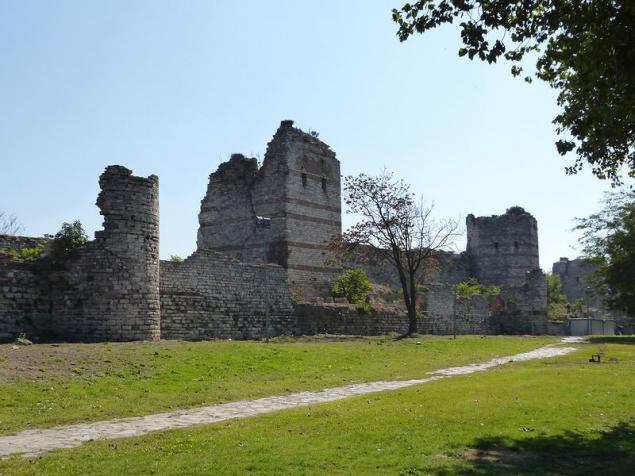
It is not surprising that at 20-fold superiority in manpower and artillery absolute Turks were busy for so long. Red flag still flies just over the northern tower. Interestingly, all the Turkish sultans after the fall of the Byzantine Empire until the fall of the Ottoman Empire in 1922, began to call themselves "Caesar of Rome." The Greek population in the framework of the new empire was the right of self-governing community, led by the patriarch, and the city continued to be called Constantinople and New Rome (officially became Istanbul in 1930).
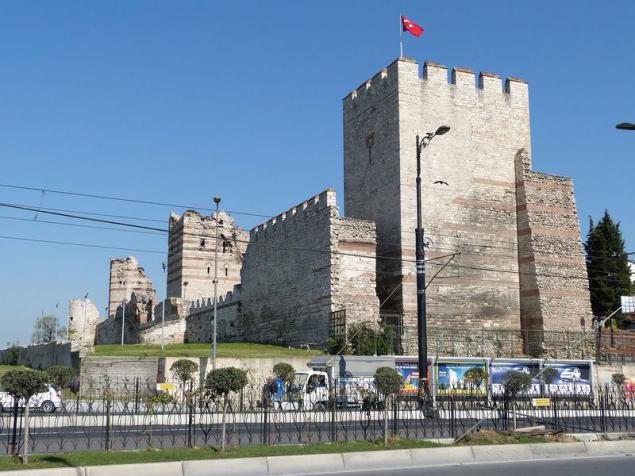
Source: ttweak.livejournal.com

Early in the morning of May 29, 1453 one hundred thousand army of Sultan Mehmed II began the final assault on Constantinople.

For almost two months, was the siege of the city, a few defenders lost the last hope. Turkish gun thoroughly grind fortifications, opening the way for the assault. Help did not come, the city was doomed. The main events of the siege took place near the gate of the Holy Roman, where almost opposite each other are the main forces of the parties and the rates of the Sultan and the Emperor. In the battle for these gates and killed the last Byzantine emperor, Constantine XI. Now then park with a fountain and through the historic gate can be reached by tram. A few years ago on the site of the final assault of Constantinople opened patriotic museum "Panorama 1453»:

The building is decorated with beautiful city views.

Map does not aim to historical accuracy. Here, the main task - to idealize, and otherwise make heroes mythologizing. However, in general terms, all apparently was. By panorama storm accompanied by appropriate sound background with a crash, screams, shots and music. Plus, crowds (mostly liberated women of the East) create incessant din. And in the museum lead crowds constantly screaming schoolchildren. It is necessary to abstract from external stimuli and try to carefully porassmatrivat details - great panorama painted in great detail (say, we do Petersburg artists).

Storm the gates of St. Roman. Siege towers and ladders on the outside walls. In the foreground are seen siege guns. Defenders of the city meet a cloud of arrows and fireballs.

Boy on a partially torn down the walls. Left on the north tower of the Turkish folk epic hero, who first raised the red flag of victory over the walls of Constantinople. What once was a bundle of arrows and died.

Reverent delight.

On the walls of the victory belongs to the Byzantines, and the two-headed eagle still flies over the defenders. But it is not for long.

Direct hit in the coming cavalry.

In the background you can see that in fact it is bad - offensive goes along the wall in many places pit filled with sand or crossed by stairs and the Turks are about strikes in the city.

In the background, the sultan and his entourage.

sends riders in the break:

The cavalry comes in a decisive attack.

Hooray! we is broken; bend Swedes. O glorious hour! a nice view! More pressure - and the enemy flees. And follow the cavalry set off ...

Advocates understand that no matter how come tryndets.

Anticipation of a three-day looting the city adds excitement.

At this time, on the other flank in full swing melee. There is very little of the wall remains. Mixed in a bunch of horses, people, and thousands of volleys of shells merged into a prolonged howl.

Guns beat simultaneously with the storm and covering their own and others. Cores are stuck in the wall. The Byzantines on the outer walls kicking bricks.

The gap through the smoke and dust is seen in Sofia.

Right up to the horizon solid mass of attackers.

Stenoboynaya artillery. In the background, in the Sea of Marmara stands the Turkish fleet.

Cannon and kernel size.

For guns in anticipation of the order is an infantry reserve. Guests are winning by a large margin. In fact, the fall of the city at the time was a matter of time. In fact, Byzantium and Constantinople itself had been destroyed fellow Christians even in 1204 IV crusade. Restored in 1261 the empire was never able to completely rise from the ruins. Constantinople as a symbol and a shadow of its former greatness was a misunderstanding among the Turkish possessions.

Now the walls of Theodosius look like immediately after the assault. Initially, these walls were built so: Walls of Theodosius length of 5630 meters crossing the Bosphorus from the Cape Sea of Marmara to the Golden Horn. The first row of wall height of 5 m defended the moat 20 m wide and 10 m deep. The second row, which had a width of 2-3 m and 10 m in height, amplified 15-meter tower. The third row of the most massive, reaching a thickness of 6-7 m, and was protected by towers in height from 20 to 40 m. The towers were equipped with devices for throwing stones and pouring hot tar enemy or oil. Base of the wall went 10-20 meters under the ground, which virtually eliminates the possibility of digging.

It is not surprising that at 20-fold superiority in manpower and artillery absolute Turks were busy for so long. Red flag still flies just over the northern tower. Interestingly, all the Turkish sultans after the fall of the Byzantine Empire until the fall of the Ottoman Empire in 1922, began to call themselves "Caesar of Rome." The Greek population in the framework of the new empire was the right of self-governing community, led by the patriarch, and the city continued to be called Constantinople and New Rome (officially became Istanbul in 1930).

Source: ttweak.livejournal.com
